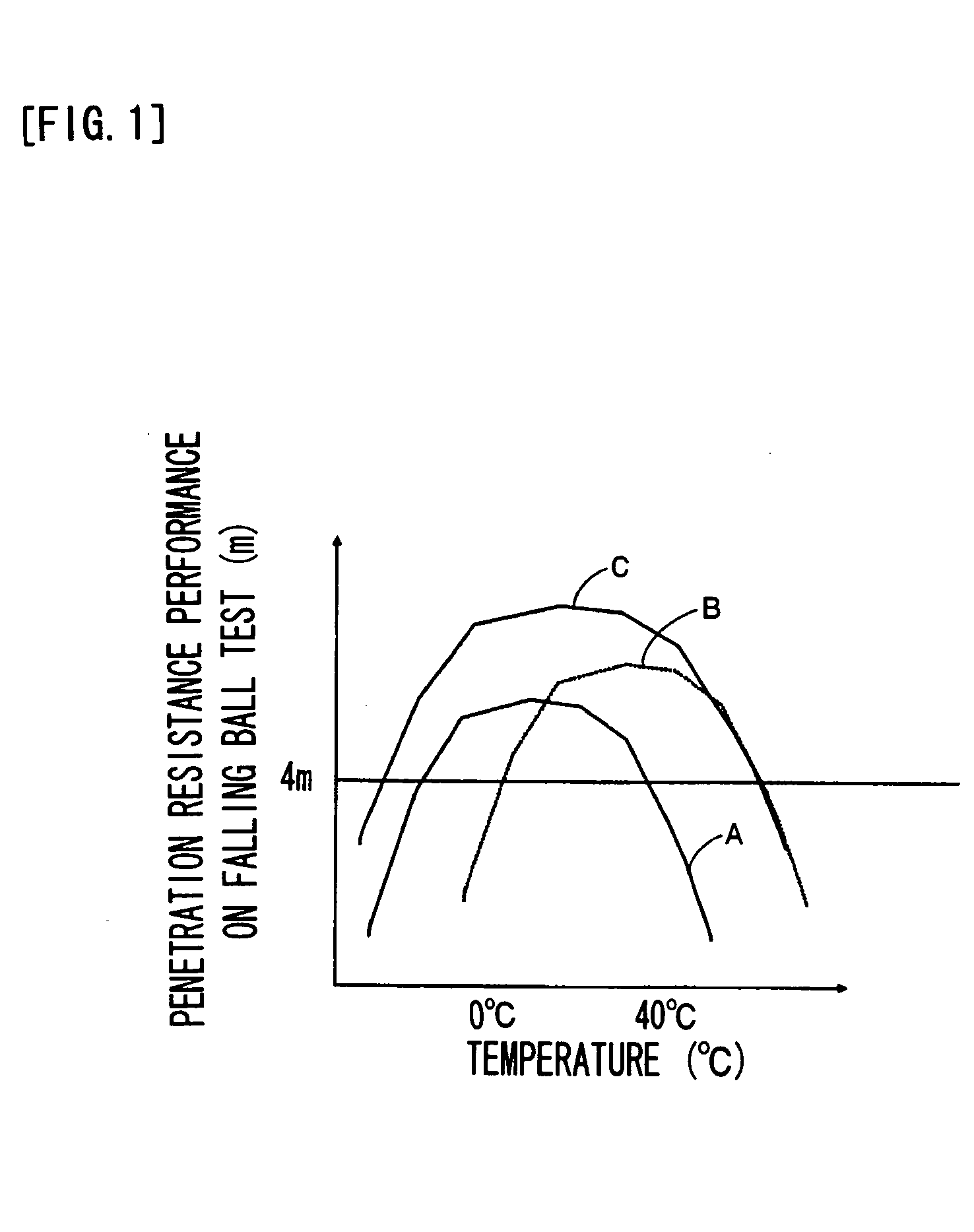Thermoplastic resin sheet and laminate
a technology of thermoplastic resin and thermoplastic sheet, which is applied in the direction of synthetic resin layered products, transportation and packaging, chemistry apparatus and processes, etc., can solve the problems of easy cracking of window glass, low high penetration resistance of window glass, so as to reduce surface density and weight, good impact resistance, good impact resistance
- Summary
- Abstract
- Description
- Claims
- Application Information
AI Technical Summary
Benefits of technology
Problems solved by technology
Method used
Image
Examples
example 1
[0151] 100 parts by weight of PVB (average polymerization degree of 1,700, butyralization degree of 68.5 mole %, acetyl residue of 0.7 mole %) obtained via acetalization of polyvinyl alcohol having a polymerization degree of 1,700 with butyraldehyde and 40 parts by weight of triethylene glycol di-2-ethylhexanoate (3GO) as a plasticizer were mixed. As an adhesion control agent, a magnesium acetate / magnesium 2-ethyl butyrate mixture was subsequently added so that magnesium amounted 50 ppm with respect to the total amount of the resin composition. As a result, a first resin useful for formation of the first polyvinyl acetal resin layer (A) was prepared.
[0152] Separately, 100 parts by weight of a coacetalized polyvinyl acetal resin (average degree of polymerization of 2,000, total degree of acetalization of 69.5 mole %, acetyl residue of 1.3 mole %, degree of acetalization by acetaldehyde of 37.8 mole %, degree of acetalization by butyraldehyde of 31.8 mole %) obtained via coacetalizat...
examples 2-7
[0176] As shown in the following Tables 2-10, the compositions of the first and second polyvinyl acetal resin layers (A) and (B) were altered. Optionally, the ratio in thickness of the polyvinyl acetal resin layer (B) to (A) was changed (Example 3). Otherwise, the procedure of Example 1 was followed to obtain thermoplastic resin sheets and build up laminates for evaluation. The results are shown in Tables 2-10.
examples 8-9
[0177] The thickness of each glass was changed so that the surface density of the laminate was rendered to 9.8 kg / m2. Otherwise, the procedure of Example 1 was followed to obtain thermoplastic resin sheets and buildup laminates for evaluation. The results are shown in Tables 2-10.
PUM
| Property | Measurement | Unit |
|---|---|---|
| Temperature | aaaaa | aaaaa |
| Temperature | aaaaa | aaaaa |
| Temperature | aaaaa | aaaaa |
Abstract
Description
Claims
Application Information
 Login to View More
Login to View More - R&D
- Intellectual Property
- Life Sciences
- Materials
- Tech Scout
- Unparalleled Data Quality
- Higher Quality Content
- 60% Fewer Hallucinations
Browse by: Latest US Patents, China's latest patents, Technical Efficacy Thesaurus, Application Domain, Technology Topic, Popular Technical Reports.
© 2025 PatSnap. All rights reserved.Legal|Privacy policy|Modern Slavery Act Transparency Statement|Sitemap|About US| Contact US: help@patsnap.com


